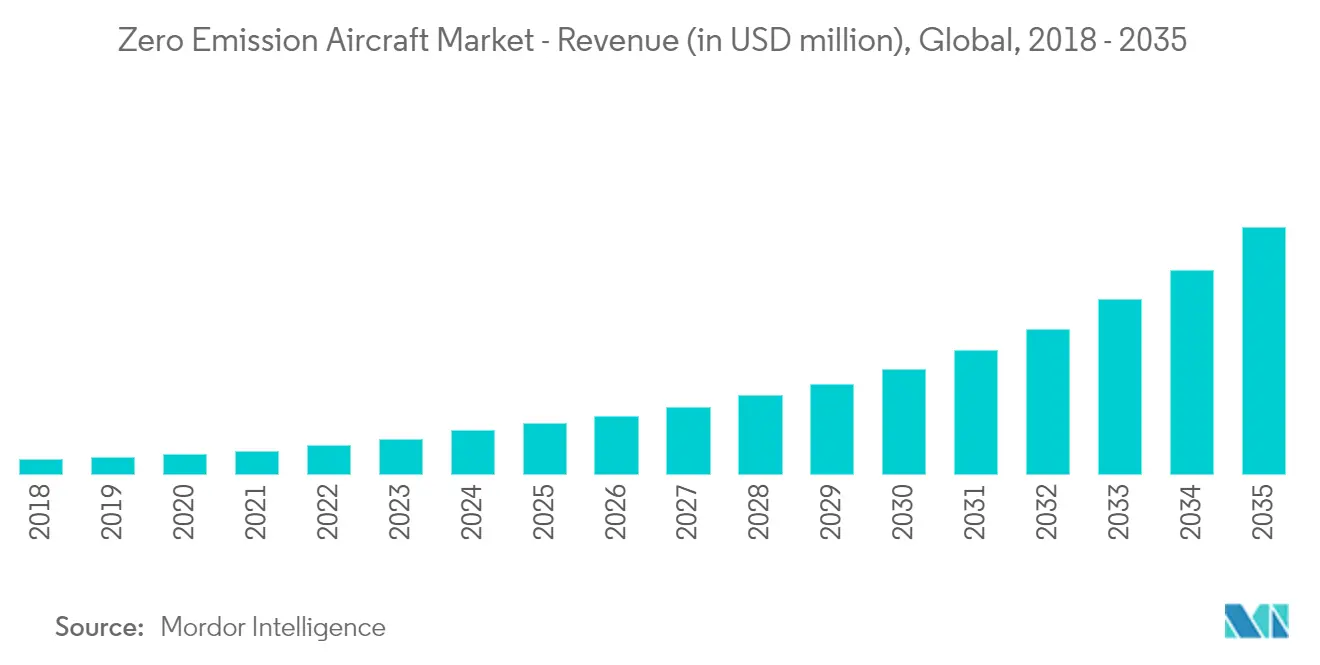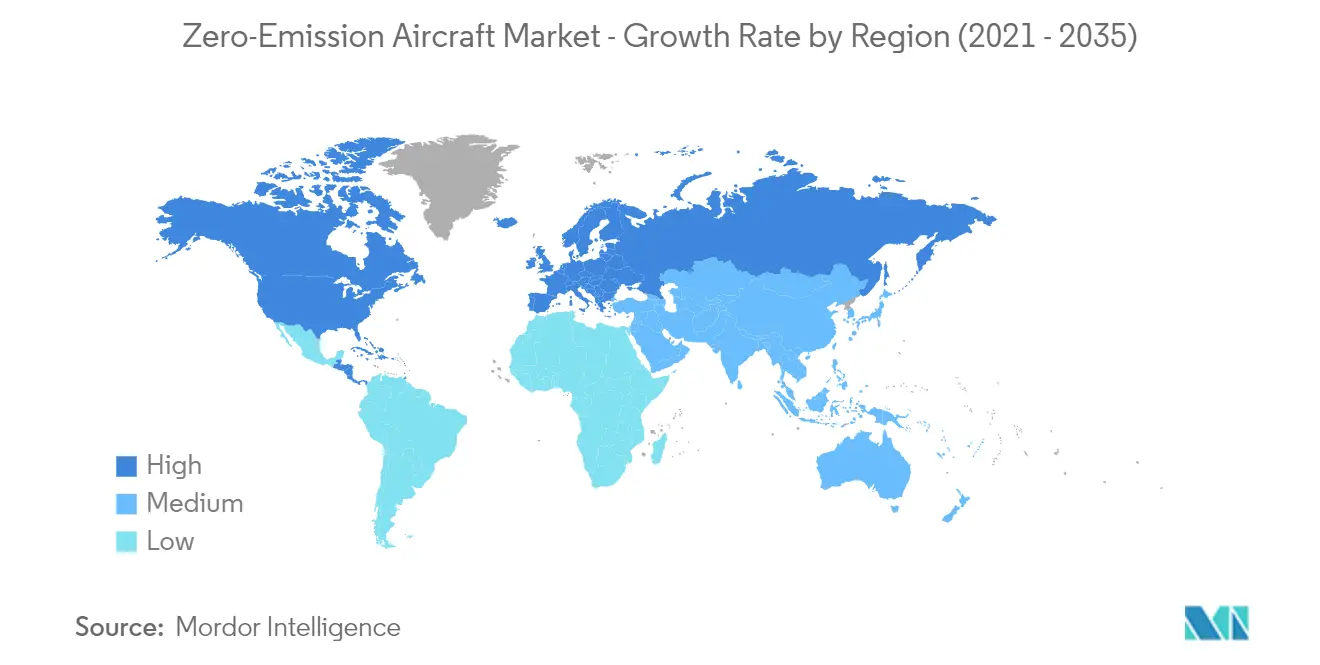Market Trends of Zero-emission Aircraft Industry
This section covers the major market trends shaping the Zero-Emission Aircraft Market according to our research experts:
Evolving Emissions Regulations Driving the Pace of Development
In 2015, the US Environmental Protection Agency (EPA) found that the greenhouse gas emissions from certain classes of engines used in aircraft contribute to air pollution and endanger public health and welfare. In 2016, the ICAO finalized a global emissions-reduction scheme applicable to passenger and cargo flights in the member countries of the UN. It was decided that the global aviation emission in 2020 will be used as a benchmark, and around 80% of the emission levels in 2020 will be offset by the airlines until 2035.
Such a landmark decision paved the way for the development of electric aircraft as manufacturers sought to resort to sustainable ways of reducing carbon footprint. The market players started investing in electric aircraft technologies and have already been successful in the form of successful prototypes and commercialization of light aircraft.
With new technology coming into the foray, regulations are being framed to improve their commercial feasibility. Regulations, such as CS-23, reestablish the objectives and design independent requirements of an aircraft. This has opened various avenues of opportunities in the development of all-electric and hybrid propulsion. The focus has shifted from fulfilling design requirements to improving consumer safety and automation in aircraft. This has enabled the designers to focus on redesigning the total aircraft from scratch and make necessary modifications that were otherwise impossible due to design restrictions.

North America and Europe will Dominate the Market During the Forecast Period
North America and Europe have a matured aviation market. Several aerospace companies are in these regions due to their proximity to major aircraft OEMs. The presence of aerospace giants like NASA, Airbus, Boeing, and Rolls Royce among others will support the growth of the zero-emission aircraft market. Over 90% of the companies currently working on the zero-emission concept are based in the US and Europe. In September 2020, Airbus revealed three concepts for zero-emission commercial aircraft which could enter service by 2035. All of these concepts rely on hydrogen as a primary power source. Rolls-Royce recently announced its plan to invest £80 million in energy storage systems over the next decade. The company is developing energy storage systems (ESS) that will enable aircraft to undertake zero-emission flights of over 100 miles on a single charge. Aerospace-certified ESS solutions from Rolls-Royce will power electric and hybrid-electric propulsion systems for eVTOLs (electric vertical takeoff and landing) in the urban air mobility market and fixed-wing aircraft, with up to 19 seats, in the commuter market. Earlier in December 2020, Hydrogen-electric aircraft developer ZeroAvia secured USD 21.4 million of backing from a raft of major investors, including Amazon and Shell, as the company completed its first fundraising round in support of plans to run its first commercial zero emission planes from 2023. The company has also partnered with British Airways to explore the development of zero emission aircraft for use in the airline's fleet. It also received approval of USD 16.3 million of U.K. government funding via the Aerospace Technology Institute (ARI). Such developments are anticipated to drive the market growth in the North America and Europe region during the forecast period.

